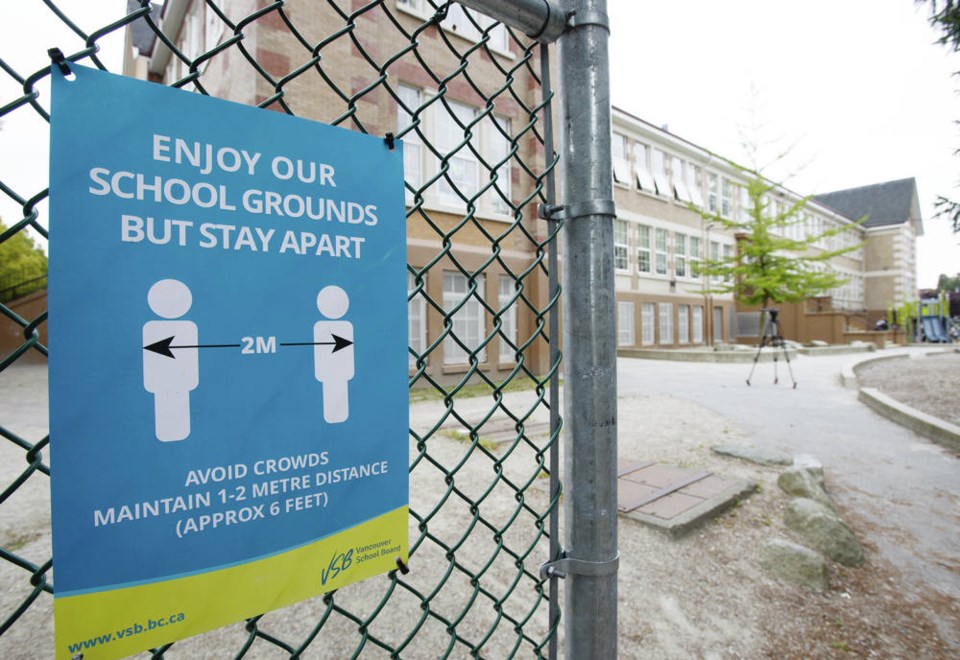A recent report documents how Canadian children have been adversely impacted by the COVID-19 pandemic.
The report, Raising Canada 2020, is the third in an annual series of reports by the advocacy organization Children First Canada, which tracks the top 10 threats to childhood safety.
The report reveals that many of the top threats to childhood, including mental illness, food insecurity, physical inactivity and poverty, may be in danger of increasing because of the pandemic.
That’s a timely warning, because the impact of the COVID pandemic is a lot to deal with if you’re a kid.
Mom or dad or maybe both don’t go to their workplace anymore, but sit at home Zooming with their computer and telling you not to distract them.
You overhear quiet conversations about “layoffs” (whatever they are) and mom and dad seem worried all the time about money.
It’s also confusing when mom and dad caution you about following the lines in the grocery store and in the school hallways.
Yet a lot of adults are still not wearing masks and are ignoring the arrows and space markings on the floor at the grocery store.
Some kids wear masks at school and follow the lines on the floor, while others, without masks, tease mask wearers about being “scaredy cats.”
Worst of all, you can’t sit near your friend at school and you’re supposed to wash your hands a lot at a single handwashing station for 25-30 other kids.
As if all this were not troubling enough, people on the TV news keep talking about some sickness that is killing thousands of people and that you could get it if you don’t follow the new rules.
Taking all of the above into account, we can understand how the pandemic is harder on kids (who are in control of nothing) than adults, who can at least rationalize this epidemic of bad news about the demands of the new world of COVID 19.
The report was jointly published by Children First Canada and the University of Calgary Cumming School of Medicine’s O’Brien Institute for Public Health and the Alberta Children’s Hospital Research Institute.
It is a “stark reminder of the significant threats to child health and wellness in Canada likely exacerbated by the COVID-19 pandemic,” says Brent Hagel, professor of the Cumming School of Medicine, adding that it’s also a call to action for us to address these issues and protect children’s rights.
As challenging a time as this pandemic is for children, the report also highlights the fact that along with children’s vulnerability, they can, with the right kind of adult support, be part of turning things around. “Children must be engaged in Canada’s recovery efforts,” says Sarah Austin, founder and CEO of Children First Canada, adding:“Truly child-centred policies can only happen when we act with children, rather than acting for them.”
Here in B.C., schools are doing what they can to stay open and are receiving an extra $2 million for mental-health programs from the provincial government.
How that relatively small amount of money will be allocated is up to individual school districts.
Some will hire additional counsellors and that’s a good thing, but as a former superintendent I fervently hope some money will be allocated to keeping the community, especially the parent community, fully informed on a weekly basis about the steps schools are taking to ensure the safety and well being of children.
That information will hopefully reassure parents and that reassurance will filter down to the kids, who depend upon adults to provide them with a sense of safety as they go to school each day.
Judy Darcy, the minister of mental health and addictions, says the province is spending more on mental health programs this year because children are facing a very different return to school.
Darcy says a total of $3.75 million will be spent in the 2020-21 school year to promote mental wellness and provide additional support for students, families and educators.
Again all good news, but given what is needed just to remediate school buildings that for years have experienced overcrowded classrooms, poor ventilation systems and not enough handwashing stations, $3.75 million is a drop in the bucket. It is not nearly enough to ensure the physical safety of B.C.’s half a million public school students in 1,600 public schools with 25,000 classrooms.
Add to that the need for additional teacher training in how to deal with kids experiencing significant personal anxiety during a crisis that only seems to be worsening.
It may be time to open the public education purse strings a little wider.
Geoff Johnson is a former superintendent of schools.



